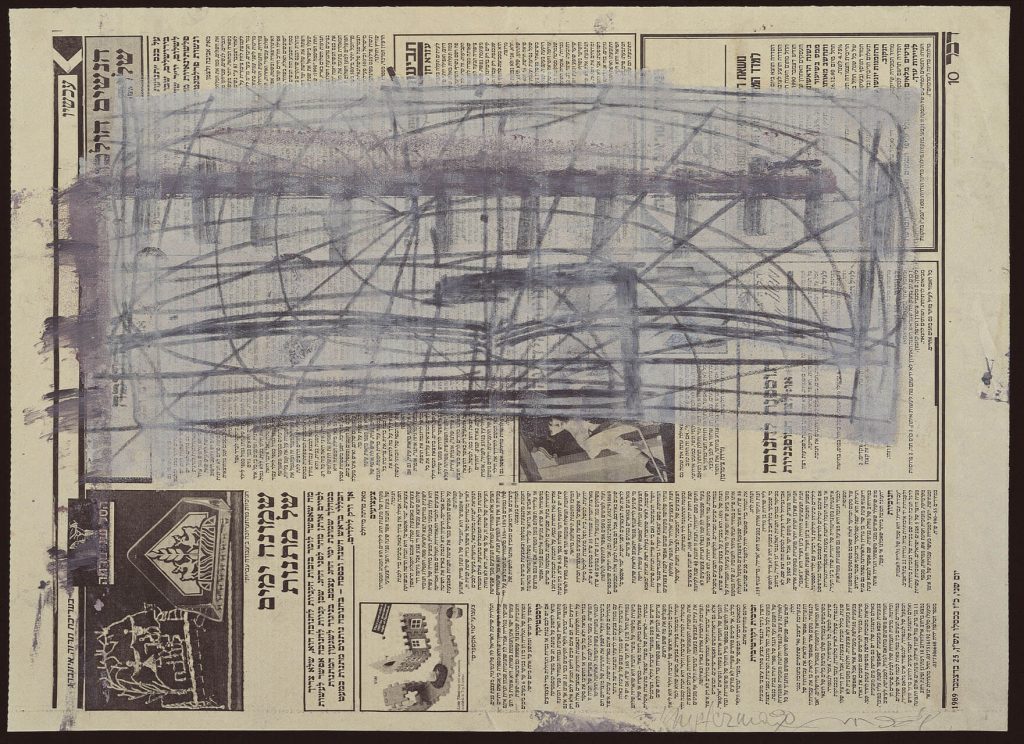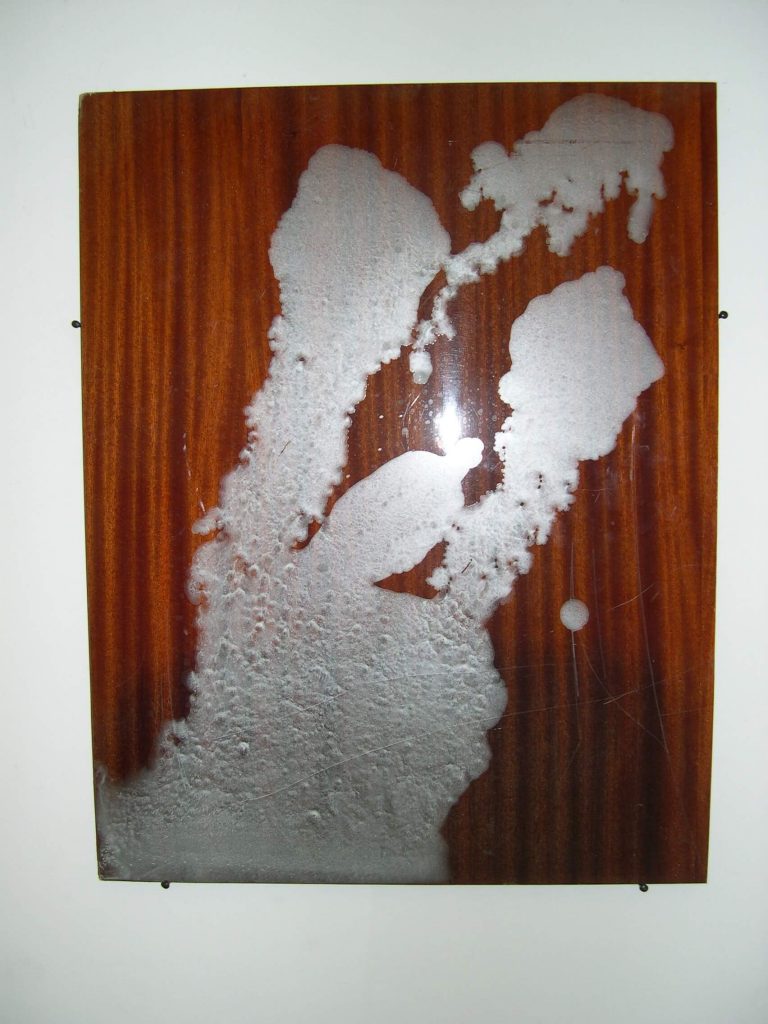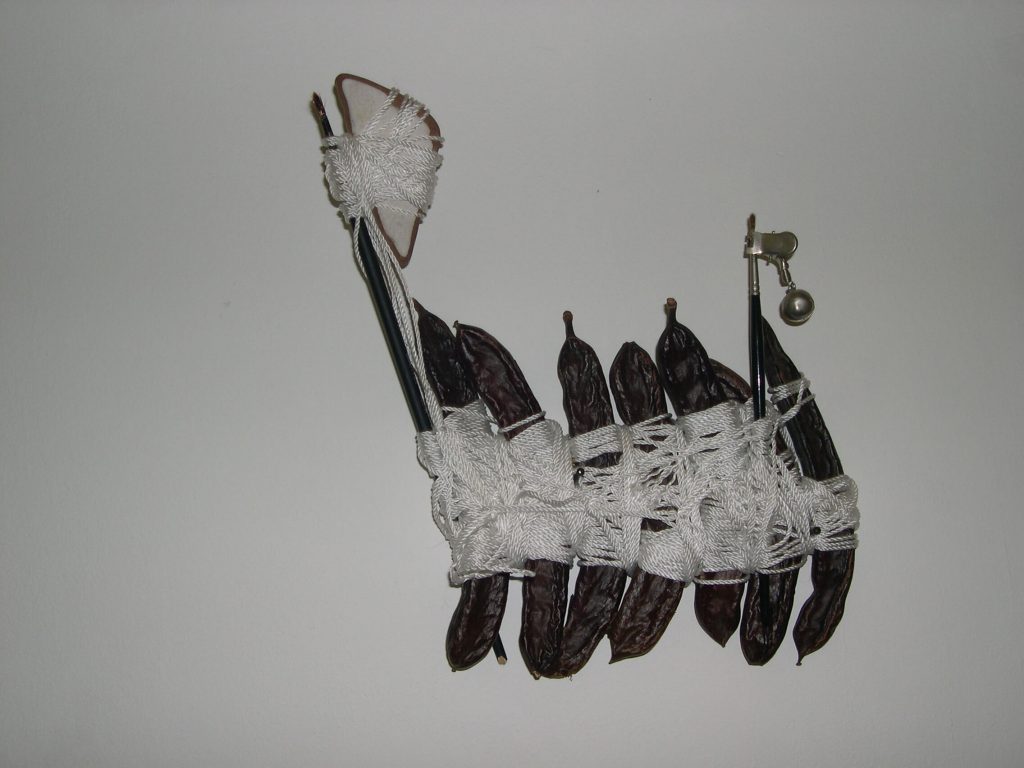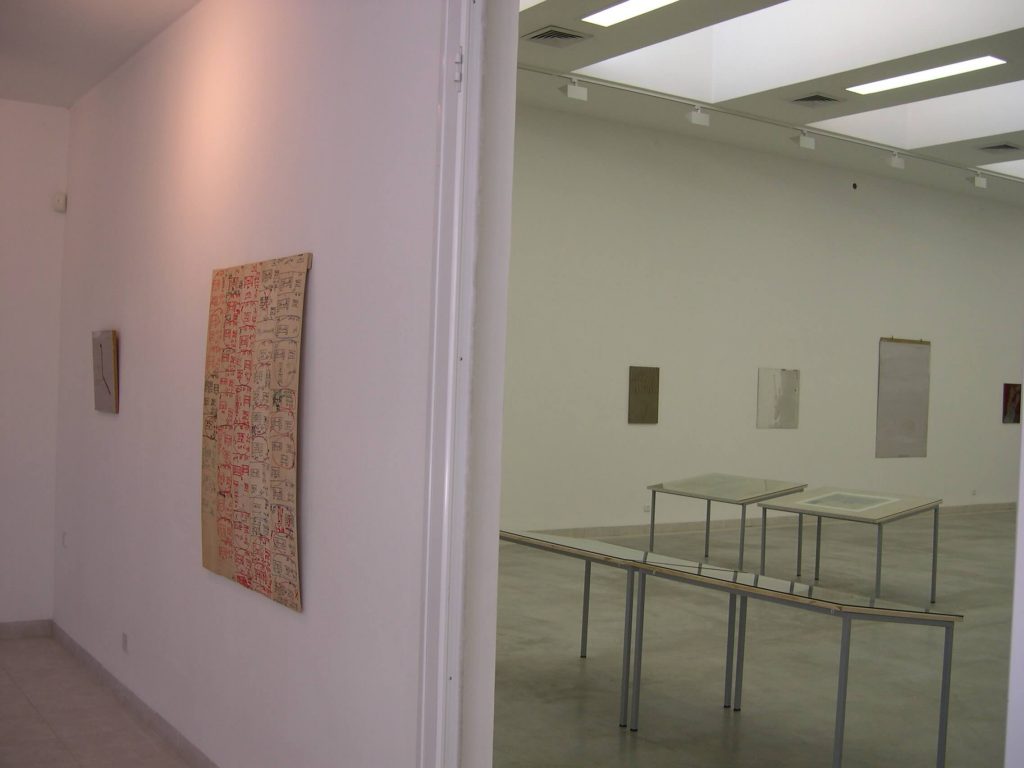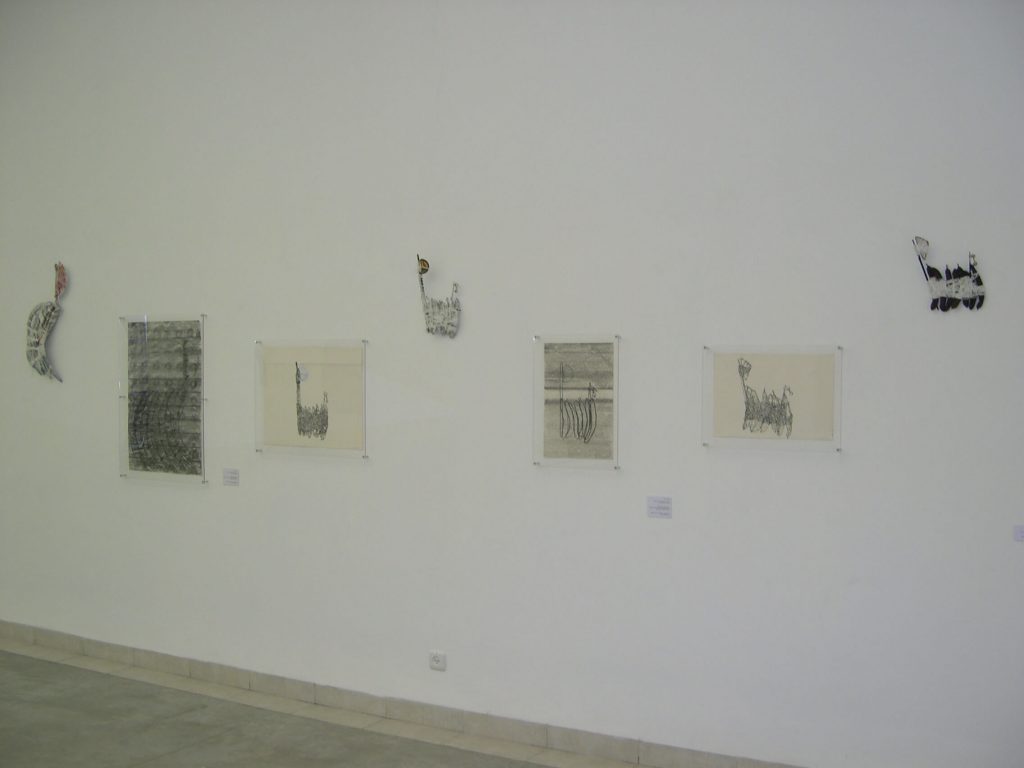Support in Need
The work of art acknowledges, often against its will, the reality of the support. It cannot, does not, exist without it. The support is the ground, the infrastructure—a bare infrastructure, a neutral ground. It is the territory—its surface, dimensions, borders—ready to be charged. Once charged, it disappears, yet its presence is never entirely expropriated. On the contrary, it is underscored, reinforced, through the materiality and sensuality of the painterly matter.
Perhaps it is the support that inspires the materials in the artist’s hand with their sensuality, which conditions the exact impression of a colorful surface, a blot, a brush stroke; it is the support that enables, invites, lures (or entices) the arm equipped with a brush (for instance) to an encounter, which renders the contact soft, hesitant, decisive—even violent. (Zaritsky used to “examine” the bare canvas with his hand to ensure an accurate degree of looseness, the favorable passivity of the support).
The three participating artists—Moshe Kupferman, Ido Bar-El, and Sharon Poliakine—address the raw essence of the support, striving to accentuate its visibility. All three, each in his/her way, opt for the support as a random object, the emotional baggage of whose rawness they endeavor to preserve, bring into sharper focus—or alternatively violate—in the final object.
This rawness differs entirely from the virginal quality of Duchamp’s objet trouvé which is functional, industrial, available, always novel-looking. It is the rawness of objects no longer in use, objects that have lost their function—whether industrial or biological—junked-objects that carry signs, scars, of their past.
Moshe Kupferman used these found supports to create paintings. Per his own testimony, he deemed wooden planks, cardboards, and scraps of paper (lokshim, “noodles”) “worthy of his treatment.” He liked their anonymous modesty, their being deserted, hurt.
In Ido Bar-El’s work, the minimalistic “intervention” applied to the support is multifaceted: the latter functions as an object linking sculpture and painting; the “intervention” engages directly, explicitly, with the object’s past, preserving and eliminating it at the same time; the “intervention” is a statement about the nature of the painterly act as the armor-bearer of a painterly language.
Sharon Poliakine brings together deserted objects to create objects which are naturally sculptural. Henceforth she guides the object through a sequence of transformations from a primal state of assisted ready-made to objects which are paradoxically more figurative the more abstract they are… In each state the image remains a reminder (possibly an obsession) gradually drawing away from the initial support.
To conclude, one ought to stress: the intention of this text was not to draw comparisons between the participating artists who differ in their artistic perception as well as their strong intuitions. As customary in this house, Moshe Kupferman’s House, the invitation to a common presentation, as at any opportune encounter, is, we believe, capable, of connecting things to form meaning, if only poetical.
Yona Fischer, June 2009
